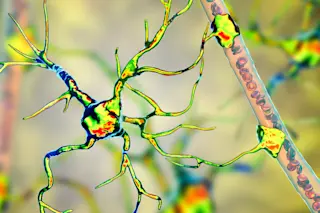Darla, one of the emergency room nurses, called me into the gynecology room. We’ve got a woman nine months pregnant, but we can’t find a fetal heartbeat. She says she felt the baby kicking earlier this morning, then the contractions started coming. Now she says there’s nothing but contractions. A young, frightened-looking woman lay on the examining table. I took the Doppler, a little handheld device that picks up the faint sound of fetal heartbeats. Though I tried a dozen different spots on her belly, I couldn’t find any sound except for the mother’s heartbeat. I put on a pair of sterile gloves to do a pelvic exam. The patient was a big woman, and I had to slide my hand in past the wrist before I felt anything. But I wasn’t sure what it was. It felt at first like a string of grapes. Then I realized it was ...
Emergency Deliveries
Explore breech delivery complications that put both mother and baby at risk during childbirth, highlighting critical fetal distress signs.
More on Discover
Stay Curious
SubscribeTo The Magazine
Save up to 40% off the cover price when you subscribe to Discover magazine.
Subscribe












